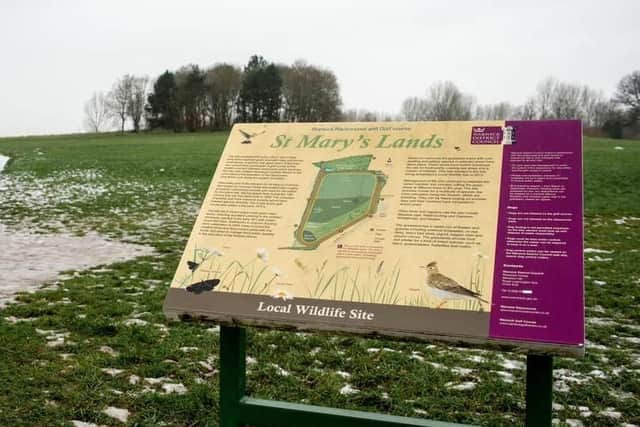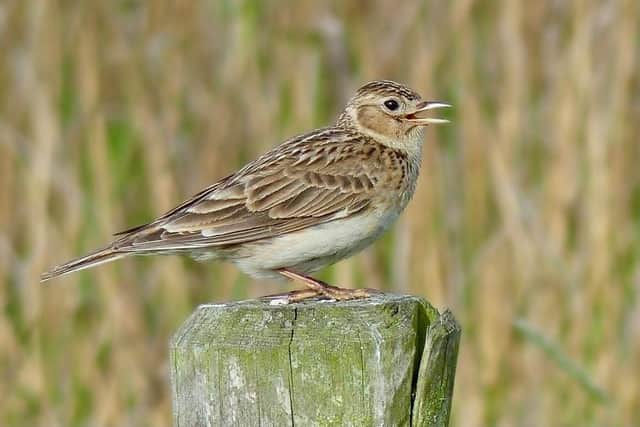Protection measures for endangered birds on Warwick's St Mary's Lands to be reinstated despite continued concerns
and live on Freeview channel 276
Protective measures that help endangered birds on land in Warwick are due to be installed for another year.
Warwick District Council says this follows on from “positive results from previous trials, which have seen a rise in numbers of ground nesting birds, such as Skylarks returning to the fields each year”.
Advertisement
Hide AdAdvertisement
Hide Ad

From late February to the end of August the council will reinstate temporary protective fencing around an area known as the ‘Lammas Field’, where Skylarks and Meadow Pipits have historically nested and raised their young in the meadow grass.
The continuation of the scheme for a further two years was approved by the Council’s Cabinet on February 8 and the council said it follows the recommendations of an ecologist who has monitored the site for the last three years.
Cllr Will Roberts, Warwick District Council’s portfolio holder for neighbourhood, said: “Ground nesting birds at St Mary’s Lands include two species that are of conservation concern.
"The most recent surveys conducted on the site show clear evidence that the fencing we have put in place since 2021 has benefitted the skylark breeding population in particular, with the birds adapting to the new undisturbed conditions.
Advertisement
Hide AdAdvertisement
Hide Ad

“We want to thank the public, in particular dog owners for their continued understanding and support while the temporary barriers are in place and also for all the positive feedback we have received about this ongoing project.”
Despite the council saying the measures have had positive impact on the birds, the Friends of St Mary’s Lands group are continuing to raise concerns about fencing off of the area, which they have also done so in previous years.
A spokesperson from the Friends of St Mary’s Lands Management Committee said: “The Friends of St Mary’s Lands have shown conclusively that these measures are unwarranted and indeed detrimental to the nesting birds.
“The ecologist only carried out three short visits per year and failed to visit in the crucial latter part of the breeding season and provided no photographic evidence.
Advertisement
Hide AdAdvertisement
Hide Ad"Our survey showed that the birds had abandoned the fenced off area and moved elsewhere.
"Research shows that fence posts provide vantage points for predators to detect and pick off chicks.
"The new administration promised consultation on any development affecting the community.
"As yet, we have seen no evidence of this in relation to St Mary’s Lands.”
Advertisement
Hide AdAdvertisement
Hide AdThe protective measures are being installed from February 26 and will be in place until the end of August.
This year the breeding area is being adjusted to include areas of meadow grass observed as being favoured for nesting.
The council said this will “improve the chances of eggs and growing chicks remaining undisturbed”.
Although the public right of way will be kept open, throughout this period all visitors and their dogs are being asked to stay out of the restricted areas and also to avoid other areas of long grass, where chicks may be hatching.